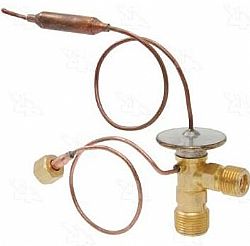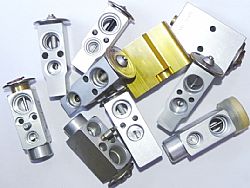The expansion valve is a high technology critical and basic component of the air condition. Its purpose is to limit the flow of the refrigerant. When the system is balanced the expansion pin remains immobile allowing the flow of the refrigerant according to the needs of the evaporator. The position of the pin compared to its seat depends on the pressure and the temperature of the evaporator.
There are three factors that affect the position of the pin; the temperature of the sensing bulb, the pressure in the evaporator and the force from the spring that determines the superheating of the refrigerant. When the temperature in the evaporator reduces, the pressure exerted on the diaphragm from the refrigerant is reduced and as a result the pin moves towards the seat reducing the flow of the refrigerant.
There are two categories of thermal expansion valves, those with internal equalizer and those with external equalizer. Their difference is seen in the way the pressure inside the evaporator affects the position of the pin. In the valves with the internal equalization the pressure that is used is that in the input of the evaporator. Those are suitable for single circuit evaporators with small pressure fall. The expansion valves with external equalizer use the pressure of the evaporator on the output as compensatory pressure in the diaphragm which results in compensating the pressure drop inside the evaporator. These are suitable for any application including multiple circuit evaporators.





 HellasSITES
HellasSITES